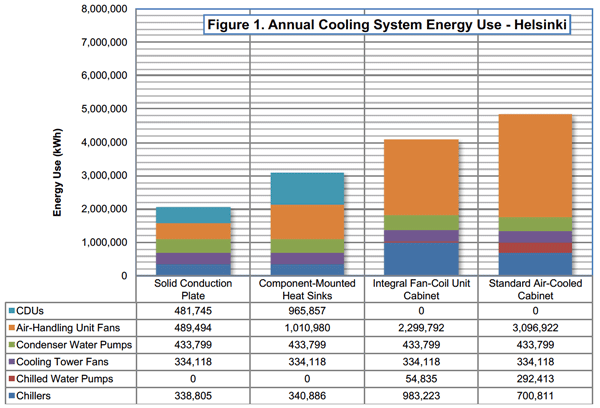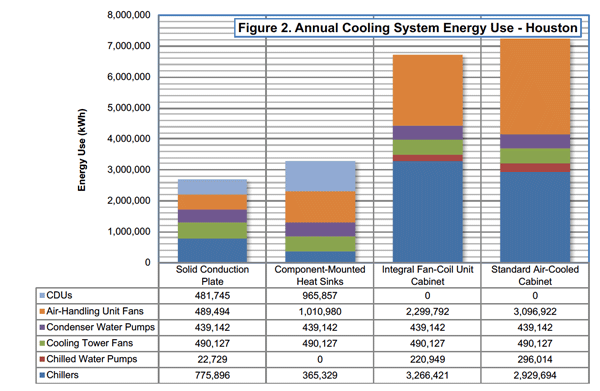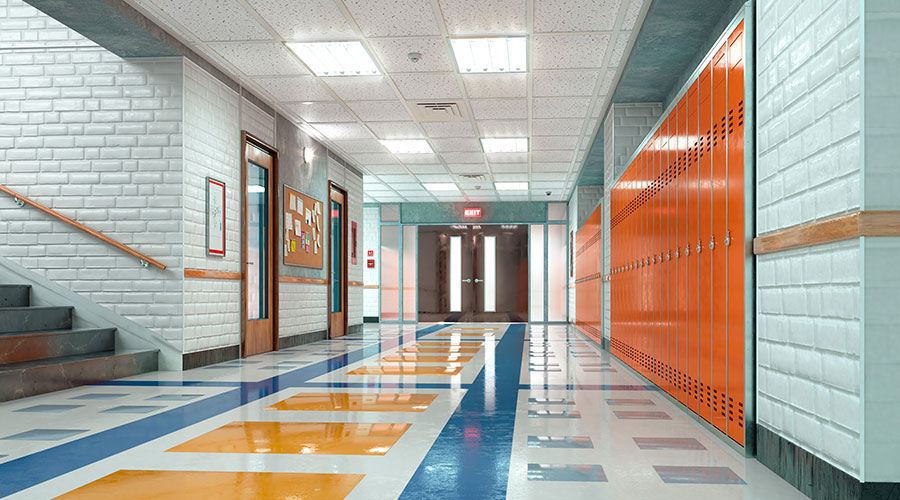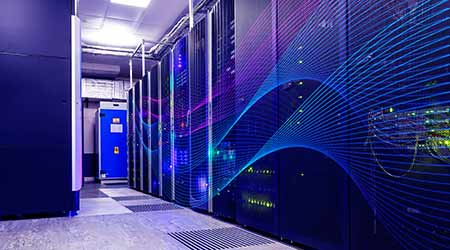Analyzing Energy Use: Liquid Cooling vs. Air-Cooled Cabinets
Data show liquid cooling offers an average lower annual energy use, whether in a cold or hot climate.
To understand the differences between air-cooled and liquid-cooled designs, it is necessary to compare energy use of the different cooling options. Studying the following alternatives with building energy modeling techniques will yield the comparative data needed to make decisions: solid conduction plate, component-mounted heat sinks, integral fan-coil unit cabinet, and standard air-cooled cabinet.
To gain a full understanding of how these systems use energy, it is necessary to categorize energy use of the sub-systems: chillers, chilled water pumps, condenser water pumps, cooling tower fans, air-handling unit fans, and coolant distribution units (CDUs).
To explore the impact of climate on energy use and the ability to use economization strategies, this analysis includes two locations, Helsinki (cold) and Houston (hot and humid).
The results of the energy use simulation (See Figures 1 and 2) support the hypothesis that the liquid-cooled alternatives will have a lower annual energy use. The data indicate that the primary sub-systems showing reduced energy use for the liquid-cooled options are the fans and chillers. This makes sense since the air-cooled cabinet alternatives rely on data center air-handling systems for cooling. Also, the chiller energy use for the air-cooled cabinet alternatives is greater since economization can only be used on a limited basis, whereas for the liquid-cooled alternatives, the higher liquid temperature allows for more hours per year to use economization.


Figure 3 summarizes the total annual energy use of the two locations by system alternative, and Figure 4 illustrates the differences in energy use, by location and by cooling system alternative. The results in this table show the significant reductions in energy consumption when using the liquid-cooled systems.


Bill Kosik (Wjk0407@outlook.com), PE, CEM, BEMP, is an expert in the assessment, analysis, and planning of energy and resource optimization strategies for commercial buildings, specializing in data centers. He has authored more than 50 articles for industry journals.
Related Topics:



















